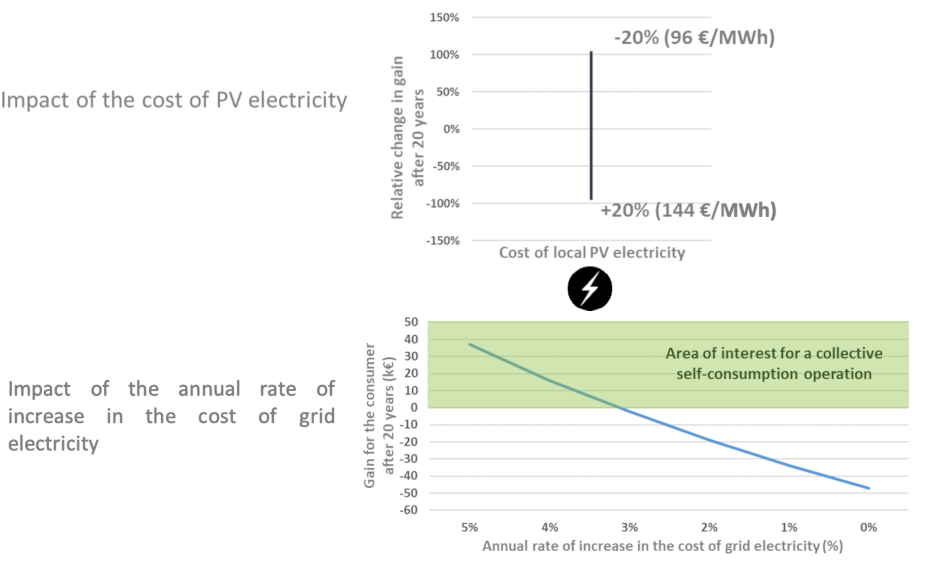Collective self-consumption
How to use ODYSSEY for my collective self-consumption project?
Find out in this video how to use ODYSSEY to assess the economic benefit of a collective self-consumption operation, both for the PV producer and the consumer.
Study objectives
This case study aims to assess the economic benefit of a collective self-consumption operation, both for the PV producer and for the consumer.
The objectives of the study are to assess:
- What is the economic benefit of participating in a collective self-consumption operation, for the PV producer, for the consumer?
- What optimal sizing of the PV array in terms of consumer consumption profiles?
- What role can play storage in a collective self-consumption project? What is its economic benefit? For the PV producer? For the consumer?
System architecture
The figure opposite illustrates the architecture of the system modeled using software ODYSSEY.
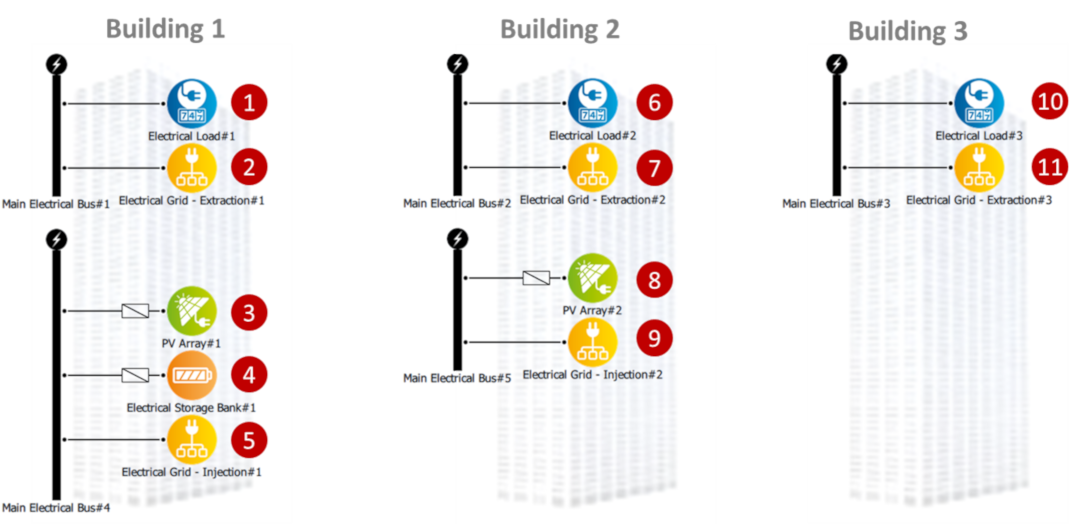
This system consists of 3 buildings:
| Building 1 | Building 2 | Building 3 |
|---|---|---|
|
|
|
In this study, the electrical loads used have the following characteristics:
| Building 1 | Building 2 | Building 3 |
|---|---|---|
|
|
|
The energy management strategy is to use the following allocation keys:
- For PV production: pro rata consumption
- For excess PV production: pro rata production
For electrical storage, the energy management strategy consists in:
- Storing excess PV production (to avoid injection of low-paid excess and increase the self-consumption rate)
- Using the stored energy as soon as a PV production deficit is identified in order to limit the use of energy from the main electrical grid (“allo-production” part)
Examples of results
The objective of this study is to assess the economic value of a collective self-consumption operation. It is necessary to address the 2 points of view in such an operation: that of the PV producer and that of the consumer. This results in a 2-phase study as well as the calculation of specific indicators for each project actor.
From PV producer’s point of view
The figure below is an example of optimal sizing of the PV installation as well as key indicators calculated with ODYSSEY, seen from PV producer’s point of view and in the case of a system without electrical storage:
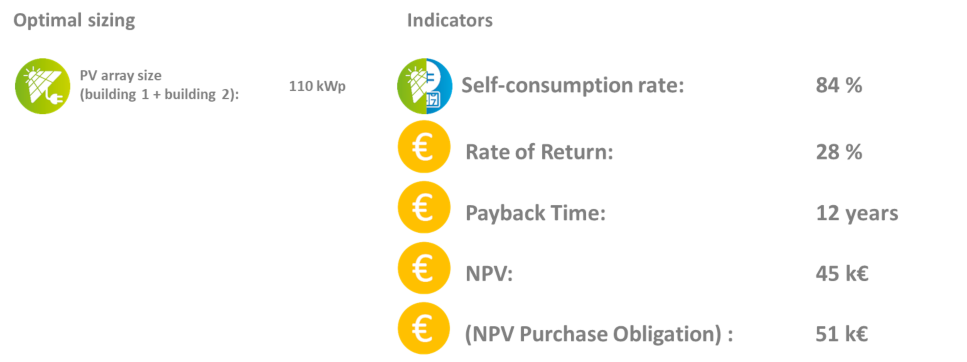
From consumers’ point of view
The figure below is an example of key indicators calculated with ODYSSEY, from consumer’s point of view and in the case of a system without electrical storage:
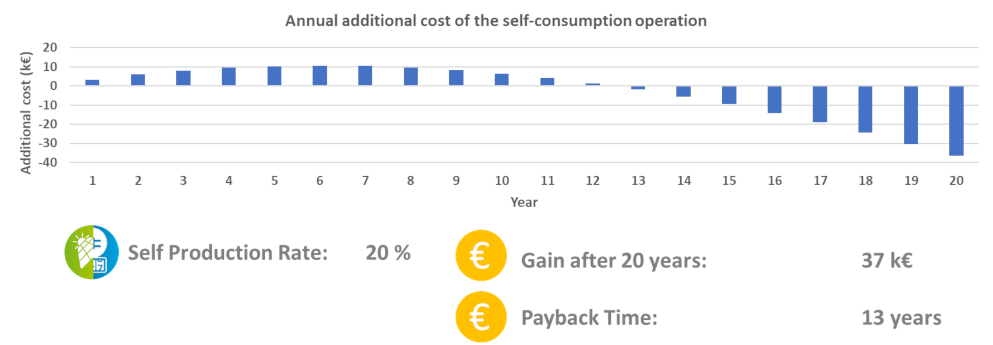
Examples of results (sensitivity analysis)
From PV producer’s point of view
The figure below is an example sensitivity analysis result, seen from PV producer’s point of view and in the case of a system without electrical storage:
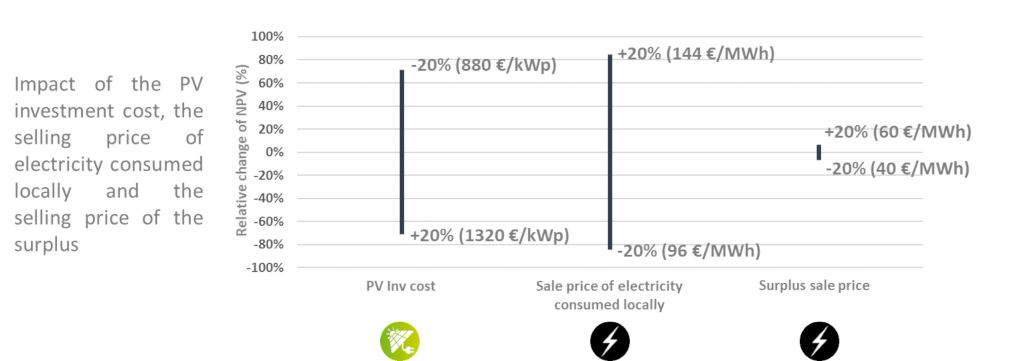
From consumers’ point of view
The figure below is an example sensitivity analysis result, seen from consumer’s point of view and in the case of a system without electrical storage:
